Food Tour
We started today with a short walk to meet our guide, Maria, for a food tour of Porto. Maria is a private chef and sommelier who does these tours as well. She grew up in the neighborhood of Porto that we were visiting. We made several stops during our tour so let’s review, step by step.
- Nota and coffee and Hungarian cookies. We had been waiting to try the Nota since we landed in Lisbon. But we did not want to have our first taste be something mass produced for airport visitors. This did not disappoint. The Nota is a pastry filled with egg custard. Seriously, the egg custard reminded me of my mom’s whipped cream where you could feel the sugar crunch between your teeth as you ate it. We also had a shortbread cookie that was half dipped in chocolate called a Hungarian. Both were great. Lots of pastries are made with egg yolks because the nuns who originally made the pastries used the egg whites as starch to stiffen their habits.
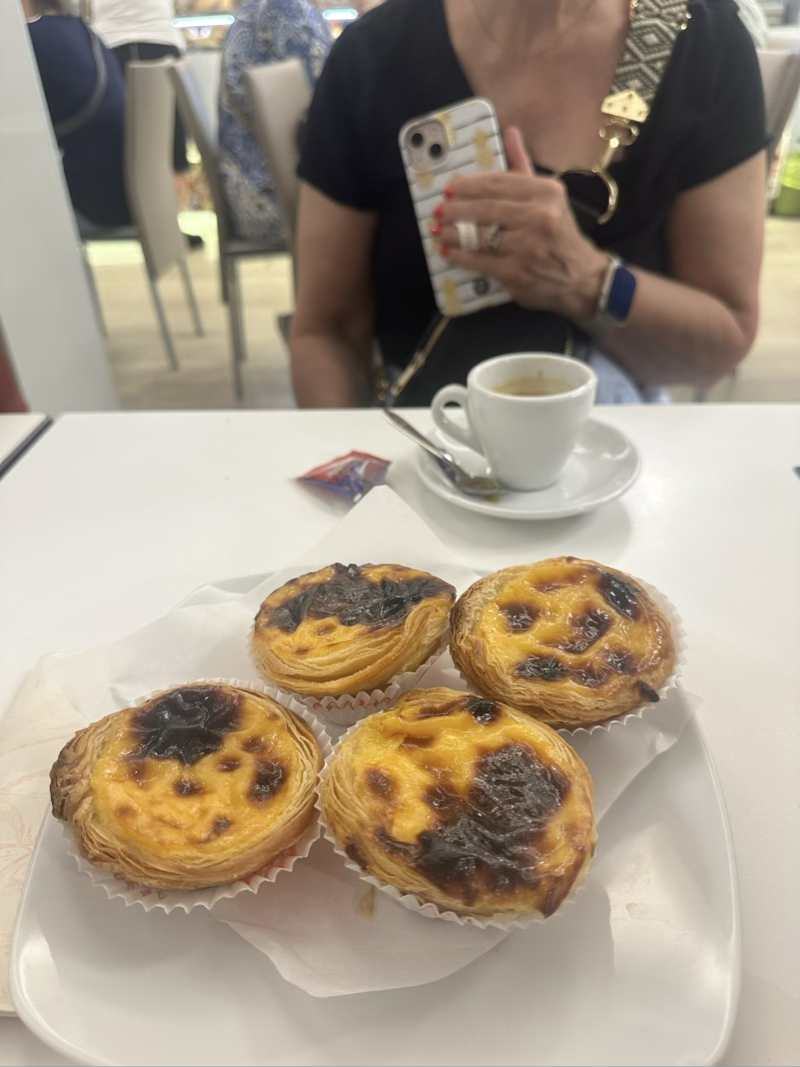
- Spice store Romeo and Juliet (cheese and apple jam) At the spice store where Maria has shopped since childhood we tried the Romeo and Juliet, a slice of cheese topped with a dense slice of Quince on top. The salty cheese and the sweet marmalade were a perfect combination.
- Market From the spice store we headed to the main market. It is a beautiful open air market, newly remodeled I think. Apparently once you have the license for a stall you can pass it on to your direct descendants, otherwise it is very hard to get in.
- Figs with Walnuts: we started with a taste of a fig stuffed with a walnut. Pretty tasty even for me who is not a big fan of figs.
- Beans (lupins) and Olives: The olives were olives, enough said. (I’m not a fan) But the Lupins were really interesting. You peel off a thin shell and then eat them. The consistency and taste reminded me of a rather hard cheese, and Maria confirmed that the lupins are often used to make a vegan cheese.
- Oyster and Mussels: Fresh oysters and Mussels. Pretty good. Brian did the oyster on the half-shell, the rest of us mussels. Not sure I’ve had a raw mussel before, it seemed like it had been cooked and then served cold.
- Sardines and Cod on crackers: Ok, this one tested us a bit. Sardines were a real staple of the Porto diet, especially if you were a working class family. I really wasn’t even sure I wanted to try one, but when you are on a food tour you just do it, that’s what you are there for. I thought the sardine on a cracker was quite good. The cod was more fishy to my taste but still decent. We actually went back and bought a tin of sardines to take on the train to the Douro valley. The cod in Porto is all dried, and then reconstituted when it is time to eat it, can you say Luetefisk?
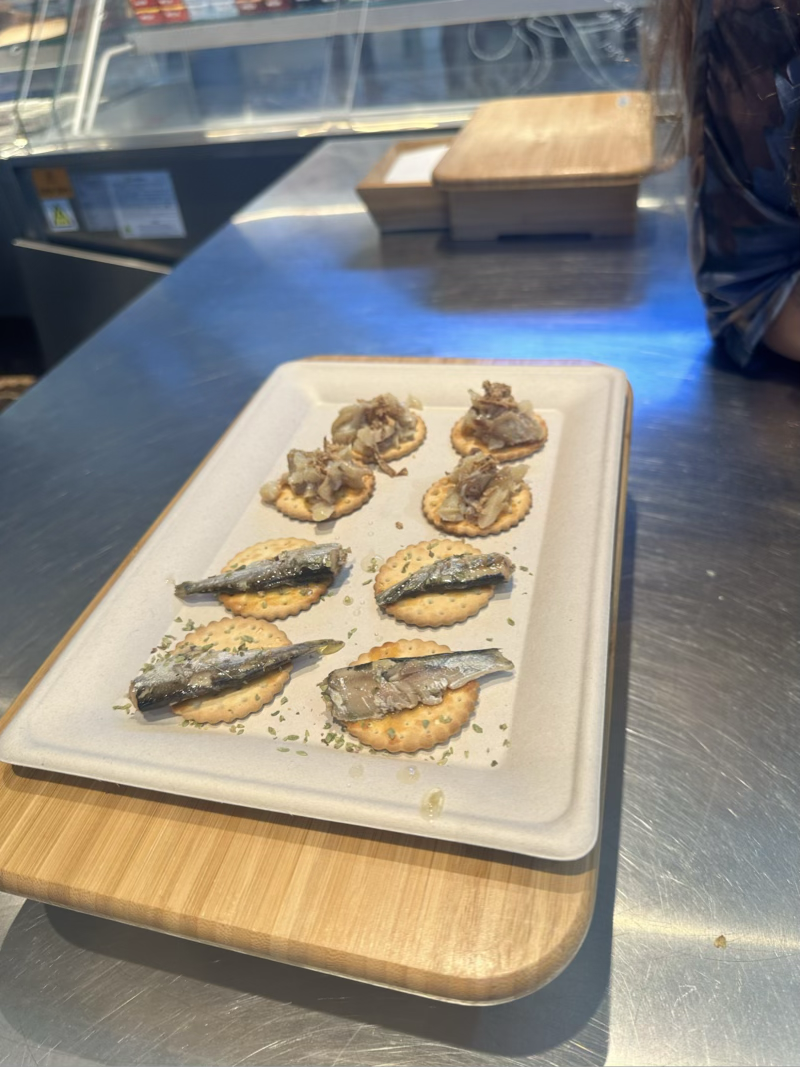
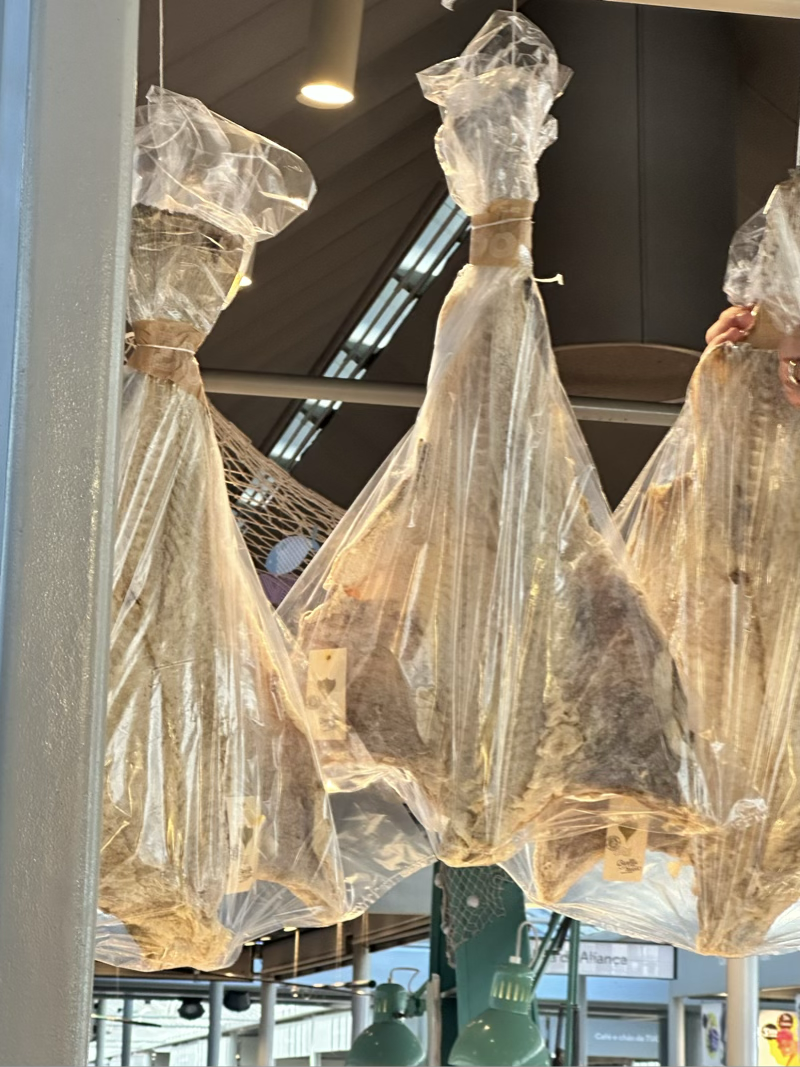
- Ginja: Time for a drink! Ginja is a cherry liquor served in a chocolate cup. I’m not a huge cherry fan, but this tasted a little more like anise, or if you are in a bad mood you might say cough syrup.
- Iberian and Black pork: Although I had tried the black pork, this was our chance to see the Iberian and black pork side by side. When we tried several slices of the different pork side by side it was easy to see why the black pork is so much more expensive. 60 euros per kg for the Iberian, and 180 euros per kg for the black. In fact Maria said that when you are getting the black pork it is important to have the butcher cut it in front of you so that you can verify that it is the black pork. When we got some to bring on the train we did just that. We also learned how they use every part of the pig, and how in the battle against Spain the residents of Porto were used as human shields to protect the city which never fell! (Porto Invictus) The humans used as shields were treated to the best parts of the pig whereas the people being protected made due with the worst.
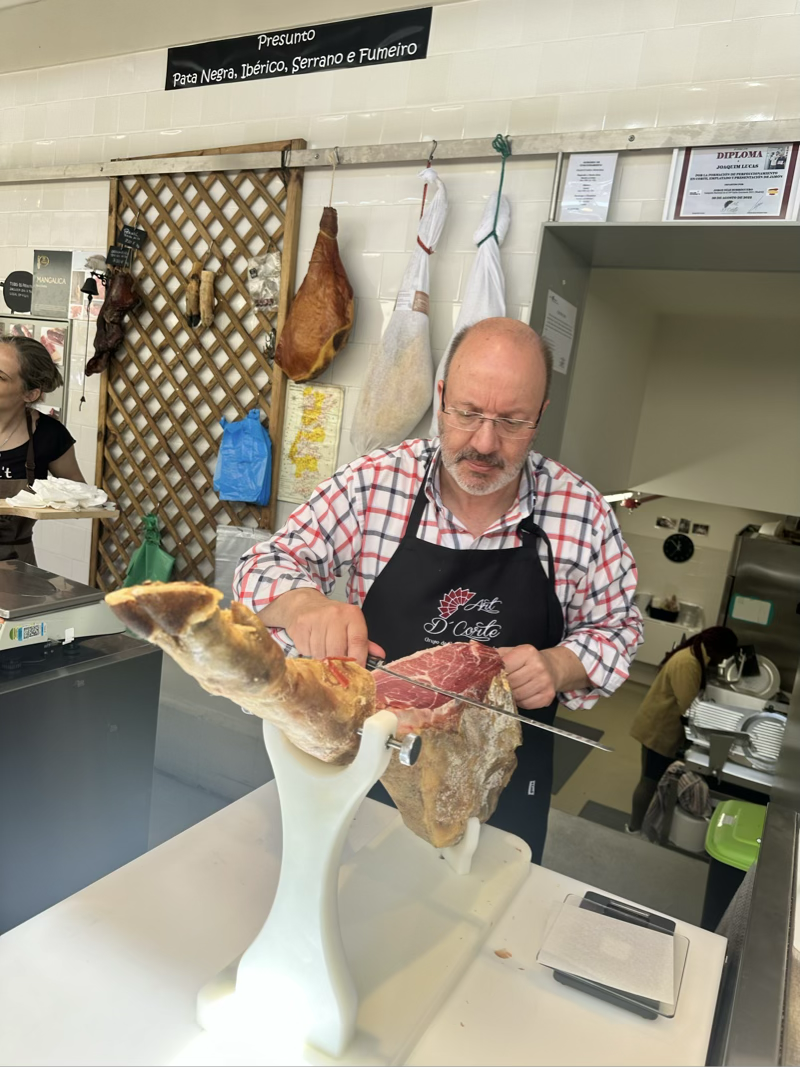
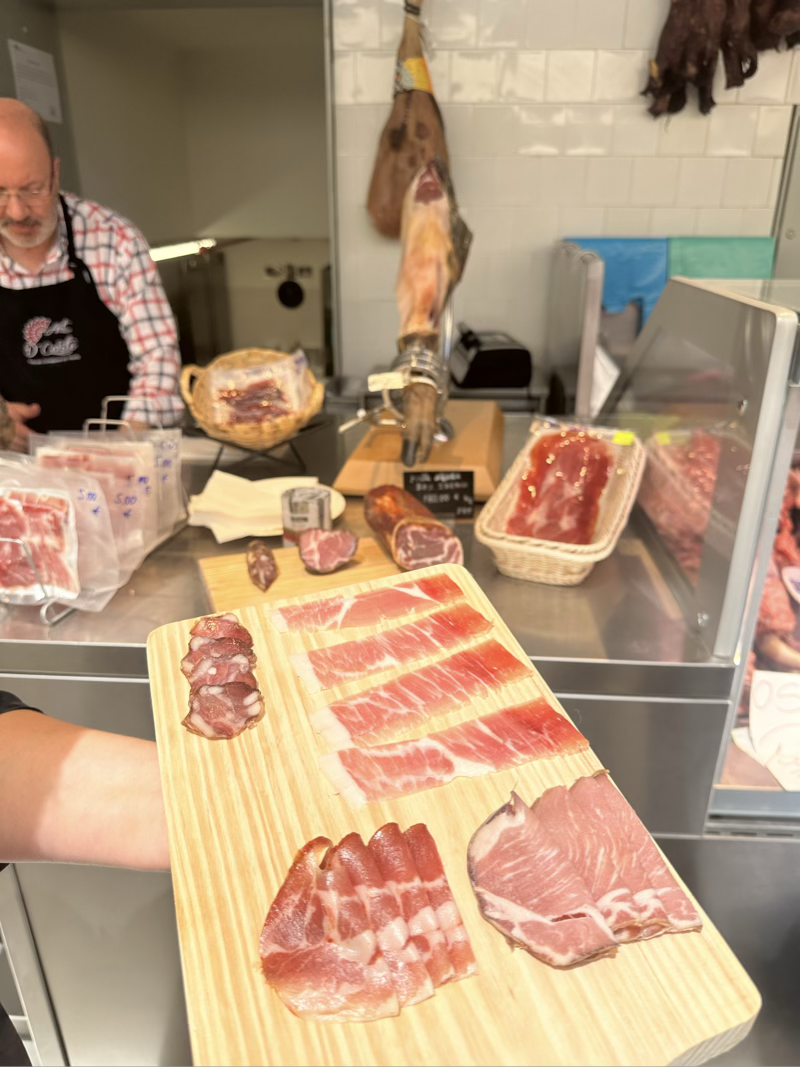
- Bread: We tried the peasant bread made with malt, barley and wheat flour. It was a very dark bread, and tasted like it had molasses in it, but that is just the malt. It lasts for a couple of weeks, and then you use it in bread pudding.
- Bonus Ginja: as we were leaving the market another tour guide came up to us with a tray of Ginja — We didn’t use it all with our group, please enjoy another glass!

- Fancy Paste store: This was kind of an odd part of the tour. Whereas everything so far had been about the peasants and working class people and their food, this was a high end store featuring tubes of paste made from every region of Portugal. We tried some savory, some sweet, and some chocolate. We felt a little pressure to purchase, and so we did get three tubes to bring on the train.
- Hot dogs and drinks: Our last stop was at a local establishment that makes the best hot dogs anywhere. This place is famous because Anthony Bourdain loved the place and featured it on his show. Reportedly he and the owners also became good friends over the years and he visited every time he was in Europe. There was a line to get in, but the hot dogs (and buns!) were really good.
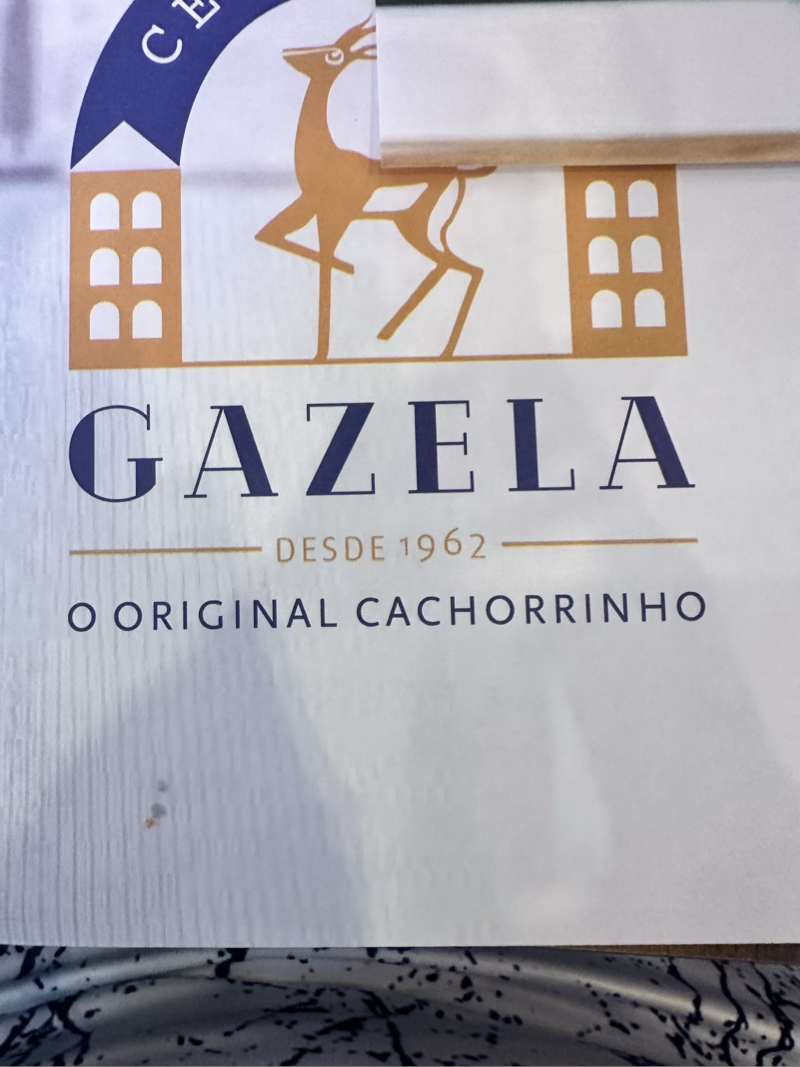
- Time Out market: As a bonus, Maria walked us through the Time Out Market, right next to the train station. This is kind of a high end food court where a few different Michelin starred chefs make their food available. It looks like the perfect place to grab a bit to eat when we get off the train from the Douro valley.
After the food tour we rested for a few minutes and then headed out across the bridge to Gaia. Along the river in Gaia is where all of the port houses are. The wine is transferred from the Douro Valley into town where it is aged and transformed into port. We planned on tasting in the Douro, but still enjoyed some time at the rooftop bar of one of the places. By the time we were done there we took the cable car back up to the bridge and walked back to our apartment. We were exhausted, so Brian and I walked to Rocky’s for some kebabs and pizza for supper.